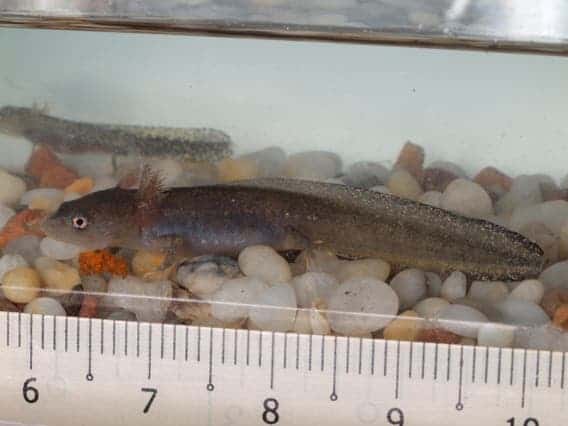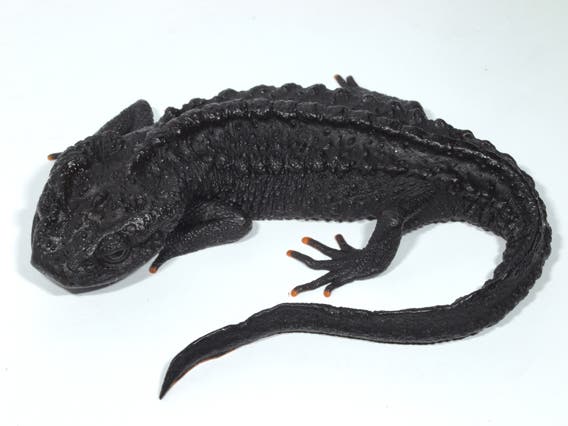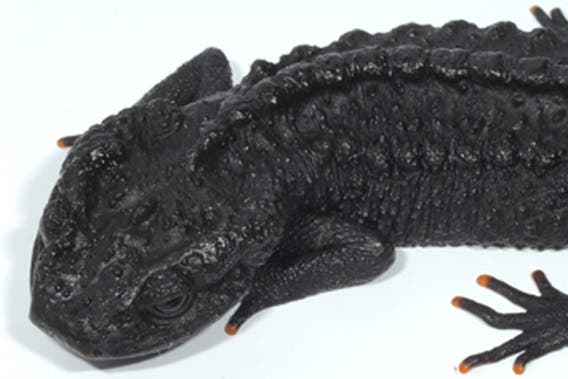Researchers find out new species all the time, but really, when do they ever find a creature that looks like it was spawned by the fiery volcano of Mordor? Coal-black with orange-tinted toes, the new crocodile newt
was identified as a different species when biologists spotted a series of differences to nearly related species.
“I was asked by a curator to identify [the new species] and temporarily identified it as Tylototriton vietnamensis (the Vietnamese crocodile newt). However, the morphology was different from the original description of the Vietnamese crocodile newt,” Kanto Nishikawa with Kyoto University told mongabay.com. “Because I have never seen the Vietnamese crocodile newt I could not confirm the specimens in Tokyo are undescribed species. In 2012, I had a chance to visit Vietnam and discussed [the specimen] with co-author, Tao Thien Nguyen, and made a conclusion on its taxonomic status, as new species.”

“Currently, habitat loss and degradation, especially around the breeding ponds, is a major threat to the populations of the new species,” the researchers write in the paper. “Legal protection of their habitats and regulation of excessive commercial collection are important measures for conservation of this species.”
CITATION: Kanto Nishikawa, Masafumi Matsui, and Tao Thien Nguyen. A New Species of Tylototriton from Northern Vietnam (Amphibia: Urodela: Salamandridae). Current Herpetology 32(1): 34–49, February 2013.
Was this helpful?





